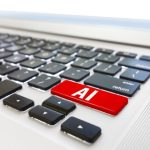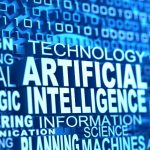Tesla is introducing its Full Self-Driving (Supervised) v14.1.7 to vehicle owners, marking another step in the brand’s ongoing improvement of its controversial driver-assist system. The rollout comes as drivers continue to seek greater consistency in performance, particularly around navigation and safety features. Although initial impressions from owners show progress in system smoothness and certain decision-making scenarios, the update still leaves lingering challenges unresolved. This update arrives during heightened public attention to autonomous vehicle progress and reliability, as Tesla navigates the gap between automation promises and real-world user experiences.
Through several public reviews and releases of previous FSD versions, users have noted incremental enhancements but persistent frustrations, especially around routing and handling complex urban environments. Earlier versions often faced criticism for abrupt maneuvers and navigation hiccups at Superchargers or intersections. The pursuit of smoother performance and safer pedestrian detection has been ongoing, with each version targeting but not fully resolving these concerns. Now, with v14.1.7, Tesla maintains its approach of iterative improvements but has not addressed every known issue, reflecting broader industry struggles with perfecting autonomous driving.
What Progress Does v14.1.7 Deliver?
Tesla has targeted performance consistency with v14.1.7, focusing on smoother vehicle operation and addressing complaints such as abrupt braking. Real-world tests suggest fewer stutters at intersections and a reduction in hesitation, areas that have troubled owners in recent months. According to drivers, the latest suite feels more natural in routine handling, even if substantial feature changes are not immediately apparent. Tesla CEO Elon Musk recently commented on these developments, expressing optimism about further refinements:
“We are working hard to eliminate brake hesitation issues, and significant progress is being made in v14.2.”
Are Navigation and Routing Issues Still a Concern?
Navigation challenges persist, particularly around recognizing optimal routes and managing complex or ambiguous scenarios—such as exiting crowded charging stations or facing blocked pathways. Testers describe instances where the system surrenders control or fails to choose efficient paths, an issue that has affected owners through several FSD updates. For some, these recurring challenges remain the most disruptive part of using Full Self-Driving. Tesla acknowledged the complexity of refining this aspect, stating:
“Optimizing routing decisions is an ongoing challenge, but we’re committed to making continual enhancements.”
How Has FSD v14.1.7 Managed Safety and Real-Time Obstacles?
The update shows improvements in handling pedestrian crossings and complex merge situations, with drivers noting FSD’s appropriate responses when other road users act unpredictably. For example, FSD reliably halted for pedestrians at marked crosswalks, even as human drivers proceeded without pause. In scenarios involving merging onto highways or encountering debris along narrow routes, the software demonstrated cautious and patient behaviors. These updates align with Tesla’s goal to prioritize safety and practical street interactions, based on direct observation from recent public test drives.
While recent software updates continue to refine Tesla’s Full Self-Driving system, significant pain points—chief among them, inefficient routing and occasional disengagements—remain in play. Drivers benefit from enhanced smoothness, more nuanced decision-making, and safer pedestrian response, but full automation is still a work in progress. For those monitoring advancements in autonomous vehicles, paying attention to software iteration details is critical. Owners considering adoption should remain vigilant and treat FSD as an evolving assistive feature, not a substitute for attentive driving. By analyzing system performance across diverse scenarios, users can make informed decisions about leveraging Tesla’s Full Self-Driving options for their daily transportation needs.










